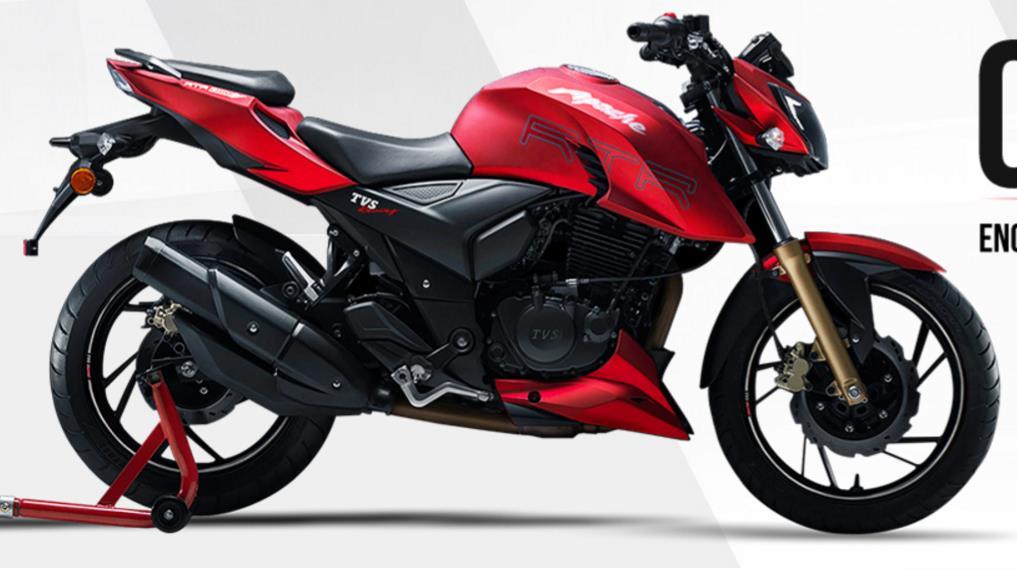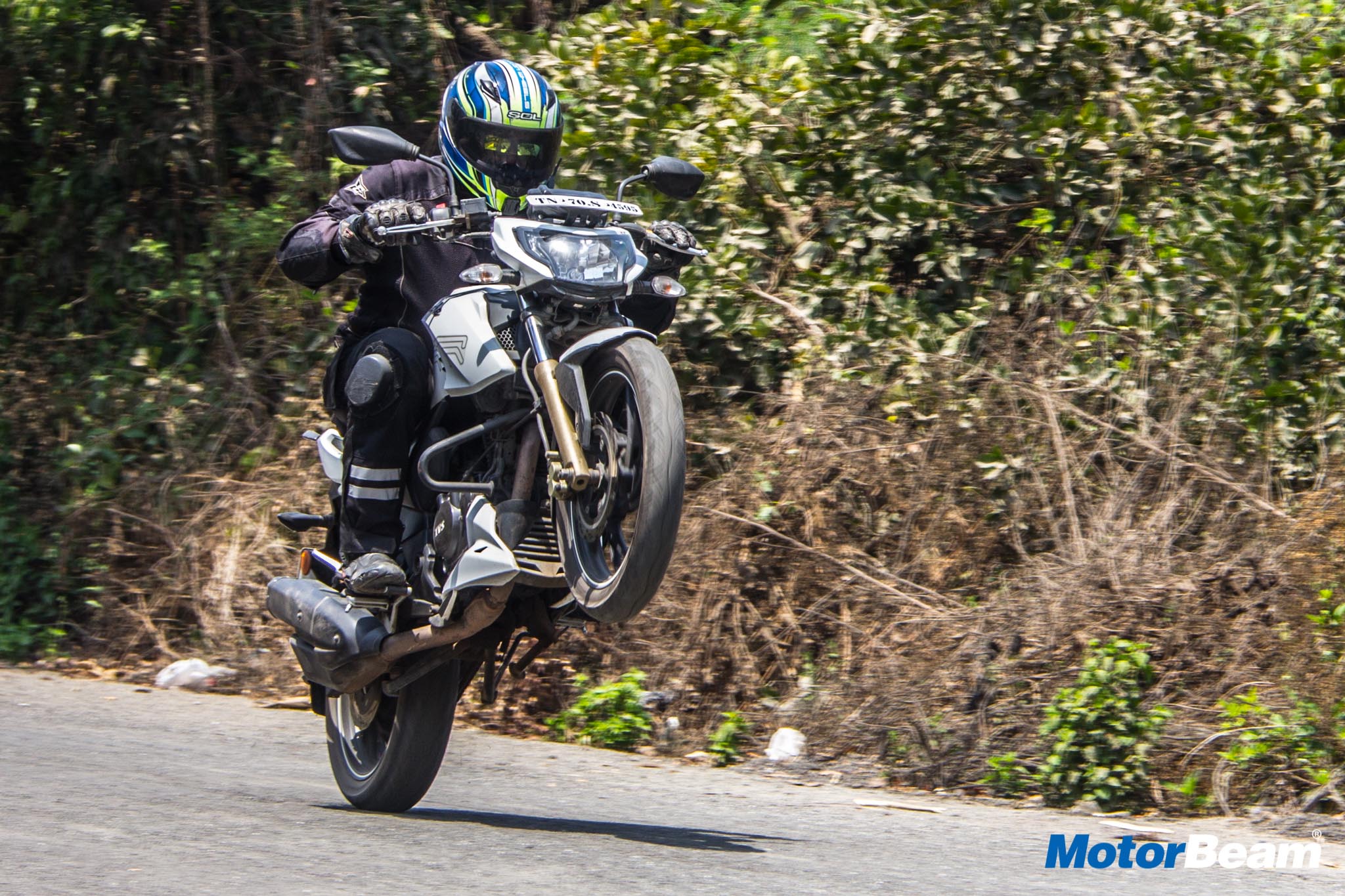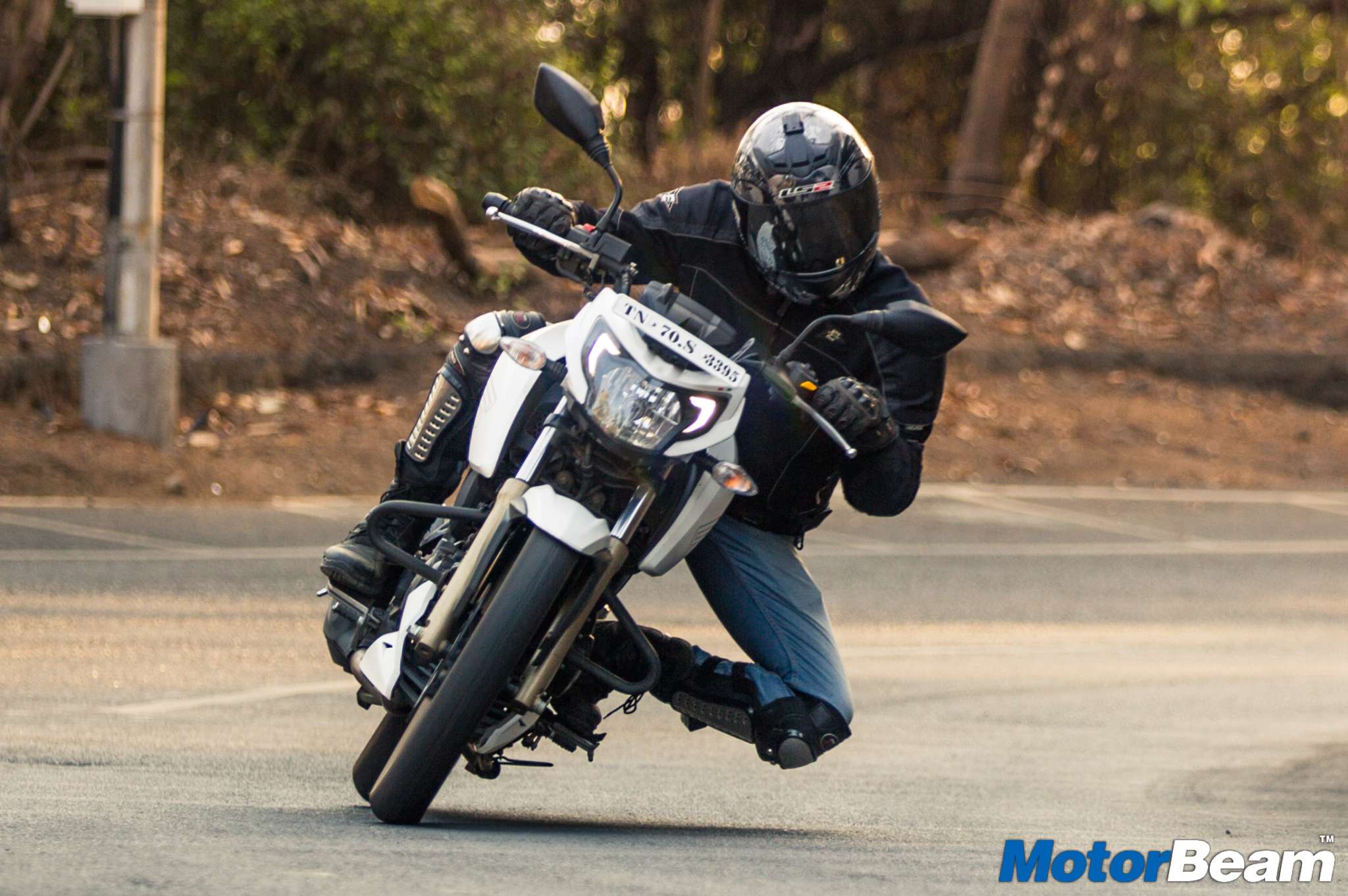Harry explaining each individual flag and scenario to us
Our instructor was Harry Sylvester who’s an extremely seasoned, national level champion who kept his emphasis on safety and basics. From the very beginning, he made it clear that our basics would lay the foundation for whatever skills we’re planning to sharpen or take back home from the track. Safety on the other hand, well I don’t need to tell you why that’s important but to help understand TVS gave us sheets with a map of the track and multiple safety flags used by the marshals on the track.
Harry breaking down body posture and weight distribution under braking
Once the safety instructions were given, we headed to the pit. TVS had provided all of us with race suits and complete riding gear. Once in our leathers we headed out and met our machines and our trainer Jagan Kumar who is also an extremely seasoned, national level rider who was there to help us with our track time. We were given Track spec TVS Apache 200’s. The weather was so hot, we were sweating simply while jumping into our leathers! The only relief we had from the heat was each time we headed to the classroom or on the track. So you can imagine what were the two places we tried to spend most of our time.
Jagan leading while we follow, observe and learn all we can
The basics are an extremely vital part of our training and it goes to show
For the first half, we focused on our body posture and following the line, the racing line of course. We all had individual laps with our trainers and it was quite helpful to ride right behind them, observe and learn. With each lap, there was this itch to wanna let loose and whack open the throttle, but learn control and you’ve mastered the first step to taming speed. As we rode and the fast wind swept across the track, I could see everyone slowly finding their rhythm on the track and make themselves at home.
This is one classroom where there were no back benchers!
We pull back in after about 10 laps each and boy, we’ve got a lot to learn. We head to the class where everyone starts hurling doubts and questions towards Harry, who answers all of them in a calm and enthusiastic manner. Having our doubts cleared, our next lesson is on throttle and braking. Braking being the emphasis here as most of the riders are used to braking in street riding conditions, they’ve never truly unlocked the true braking potential each machine holds. Something to look forward to as we head back to the track and do a few more laps focusing on both these aspects.




